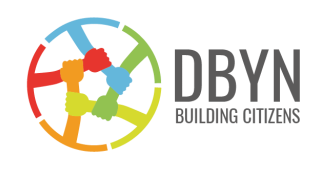|
1 Comment
This video is a good introduction on NEETs, including defitions and youth work approaches to tackle it. WHAT IS THE LIVING LIBRARY?
The Living Library is an innovative method designed to promote dialogue, reduce prejudices and encourage understanding. The main characteristics of the project are to be found in its simplicity and positive approach. The Living Library works exactly like a normal library – readers come and borrow a ‘book’ for a limited period of time. There is only one difference: the Books in the Living Library are human beings, and the Books and readers enter into a personal dialogue. The Books in the Living Library are people representing groups frequently confronted with prejudices and stereotypes, and who are often victims of discrimination, prejudice or social exclusion. In this library, Books cannot only speak, but they are able to reply to the readers’ questions, and the Books can even ask questions and learn themselves. The Enter! project was initiated by the youth sector of the Council of Europe in 2009 aiming at the development of youth policy and youth work responses to situations of exclusion, discrimination and violence affecting young people, particularly in multicultural disadvantaged neighbourhoods. This project is a response to the growing concern and attention of the European Steering Committee on Youth and the Advisory Council on Youth, the governmental and non-governmental partners of the youth sector of the Council of Europe, to matters of social cohesion and inclusion of young people.
The main concerns that fed into the project were the multi-dimensional social and economic imbalances which hindered young people in accessing social human rights. The methodology of the project sought alternative ways of thinking and practicing youth work, starting from the involvement of young people themselves, relying on the competent action of youth workers and youth organisations and seeking medium and long-term impact through youth policies at local and national level. Enter! combined different types of activities and youth interventions which, while rooted on the realities of young people and based on youth work practice, sought to influence youth policies in Europe from the local to the national level. On the one hand, the project included activities to train youth workers to carry out more qualitative human rights based youth work. On the other hand, the project extracted policy input and recommendations from the practices of youth work. All this happened with a very clear interdisciplinary approach, both inside and outside the Council of Europe. |
- Home
- About
-
Training
- Upcoming activities >
-
Past activities
>
- Youth Guardians
- Rise: Design for emergent futures
- Mental Health in Youth Work
- Yout(h)echnology
- European School of Animators 2023
- The Future is Europe
- Voices of Youth 2022
- Educate to Elevate Youth
- SoS-Safeguarding
- Play It Covid-Safe!
- Coping over coffee
- Statement Coronavirus
- I Youth Advocate
- Camino
- European Summer School of Animators 2019
- The Journey Never Ends
- European Summer School of Animators
- Ready, Steady, Go !
- Advocates for Education
- Common ground
- Rise Up !
- DB4R >
- En Route >
- All Alien
- You(th) for Human Rights
- Generations of Participation - Past training
- Advocacy
- Resources
|
The international secretariat of Don Bosco Youth-Net ivzw is financially supported by the European Union, through its 'Erasmus+'-programme, and by the Council of Europe, through its 'European Youth Foundation'. This website is a publication of Don Bosco Youth-Net ivzw. The website reflects the views only of the author, and neither the European Commission nor the Council of Europe can be held responsible for any use which may be made of the information contained therein.
|

